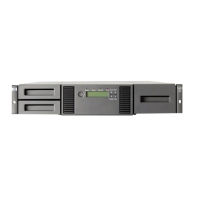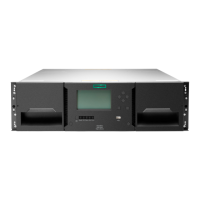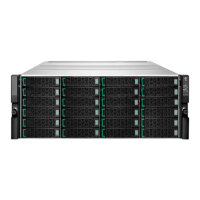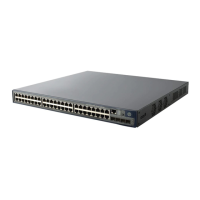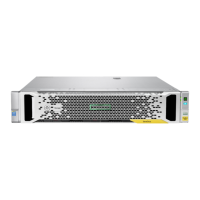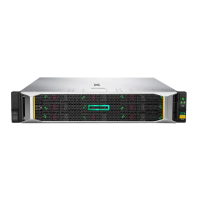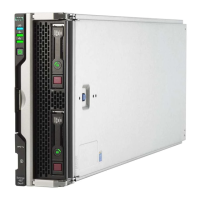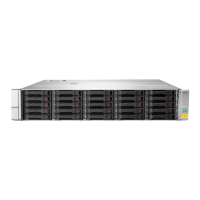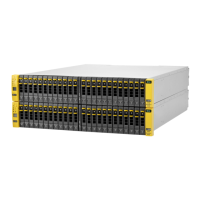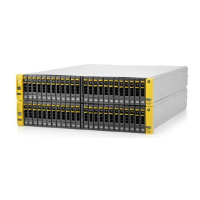Technical white paper Page 10
Note
Customers must upgrade their MSA 2040/2042 SAN controller firmware to GL101 or later for iSCSI functionality and set the host port
mode using the CLI command set host-port-mode. See the CLI Online Help or the HPE MSA 1040 and 2040 CLI Reference Guides
for more information on the command.
Preliminary instructions for upgrading to the HPE MSA 1040 or HPE MSA 2040/2042
This section lists the methods to update an existing HPE MSA storage system to the updated controllers of the HPE MSA
1040/2040/2042. This section examines the following topics:
Upgrade considerations
Known limitations
Before you begin the upgrade
Upgrade procedure
Upgrade considerations
The following list of important upgrade considerations need to be noted during an upgrade:
Before upgrading to an HPE MSA 1040 or HPE MSA 2040/2042 storage system, you need to copy data from any existing SATA virtual
disks to SAS virtual disks because SATA drives are not supported with HPE MSA 1040 or HPE MSA 2040/2042 controllers.
The MSA 1040 storage system ships standard with dual controllers and a storage enclosure. Drives from a P2000 G3 storage system
must be moved to the MSA 1040 storage system enclosure during the upgrade process and placed in the same order as they were in the
P2000 G3 storage enclosure if possible, for consistency. The same drive order is recommended to maintain consistency with the original
layout and any documentation that might exist. However, it is not required because the metadata with be identified by the MSA 1040
controllers. You should move drives only while the system is offline. If there was an existing Remote Snap replication or a 512 Snapshot
license on the P2000 G3 storage system, you will need to obtain new licenses and apply them to the upgraded system. You can obtain
the new licenses from the My License Portal. myenterpriselicense.hpe.com/
If you purchase an HPE MSA 2040 storage enclosure for use with MSA 2040/2042 controllers, you must remove the existing drives from
the P2000 G3 storage enclosure and place them into the new HPE MSA 2040 storage enclosure in the same order as they were in the
P2000 G3 storage enclosure if possible, for consistency. The same drive order is recommended to maintain consistency with the original
layout and any documentation that might exist. However, it is not required because the metadata with be identified by the MSA
2040/2042 controllers. You should move drives only while the system is offline.
If you have an existing VMware® virtual infrastructure that us VMware vSphere of this white
paper before upgrading.
If multipathing is used, you must add multipath settings for the new controllers before the upgrade to ensure consistent access to the
array after the upgrade. Failure to properly update the multipath settings could result in data unavailability or data loss.
You might need to recreate the host mappings after the upgrade. Record array mapping in case this information is required.
Allow a minimum of two hours to complete the upgrade process. Allow additional time for configurations that contain large host counts
because volume-to-host mappings might need to be reconfigured.
If your current environment is Boot from SAN, verify Boot from SAN settings after the upgrade using this document as a guide. From the
:
h20565.www2.hpe.com/hpsc/doc/public/display?docId=emr_na-c01861120
During the upgrade, the storage system will be powered down and all HPE MSA controllers and enclosures must be removed and
replaced with HPE MSA 1040 or HPE MSA 2040 controllers or enclosures.
IP addresses might not be retained during the upgrade. Refer to the MSA 1040/2040 SMU Reference Guide for firmware release G220
and GL225 for setting the initial IP addresses of the new controller management ports.
The SMU for the HPE MSA 1040 and MSA 2040/2042 supports Microsoft® Internet Explorer, Google Chrome, Mozilla Firefox, and
Apple Safari browsers.
If you are changing storage protocols with the upgrade, you need to validate that you have the appropriate host bus adapters (HBAs) to
support the new storage protocol.
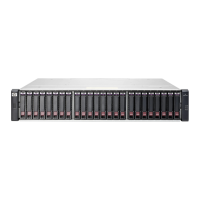
